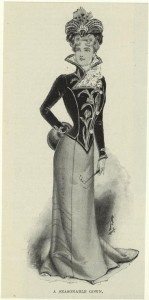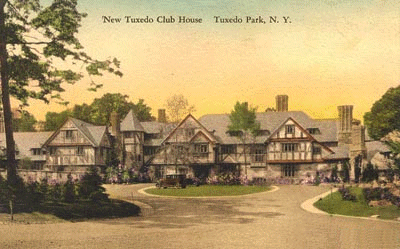
INDUSTRY DURING THE FIRST WORLD WAR: WOOLWICH ARSENAL © IWM (Q 27839)
A female worker operates a naval gun rifling machine in the Royal Gun Factory at the Royal Arsenal, Woolwich, London, in May 1918.

WOMEN IN THE FIRST WORLD WAR© IWM (Q 30678)
Three members of the Women’s Land Army employed on an English farm during the First World War.

WOMEN AT WORK DURING THE FIRST WORLD WAR© IWM (Q 30804)
A female driver lies on the ground as she works on a wheel with a spanner.

WOMEN AT WORK DURING THE FIRST WORLD WAR© IWM (Q 30695)
A member of the Women’s Forestry Corps uses an axe to mark felled tree trunks for sawing during the First World War.

THE WOMEN’S ROYAL AIR FORCE (WRAF) DURING THE FIRST WORLD WAR© IWM (Q 12291)
A motorcyclist with the Women’s Royal Air Force (WRAF) on a Clyno motorcycle combination.

WOMEN RAILWAY WORKERS DURING THE FIRST WORLD WAR© IWM (Q 109866)
A female gas lamp cleaner of the Lancashire & Yorkshire Railway at work outside Victoria station, Manchester.
“[A] newspaper article appeared objecting to women in trousers then worn by those who were undertaking duties which it would have been difficult or dangerous to perform in skirts. The mentality of persons who would prefer a woman to wear a skirt rather than trousers or breeches and a tunic when hoeing turnips, loading hay, clearing out a pig-sty, cleaning windows, or working in a munitions factory is difficult to understand. So comfortable did women find their two-legged dress that some land girls preferred to wear their breeches when off duty and were reported to their superior officers for so doing. These ladies refused to interfere, their opinion being that the dress was a decent and honourable uniform which the public should respect as it respected the uniform of the soldier.”
~ How We Lived Then, Mrs. C. S. Peel





They are great photos.
A couple of years ago, I was teaching a course on the history and art of the suffragette movement and found it very difficult to find good quality photos of women seriously involved in work, especially war work. There are plenty of photos of women riding bikes, walking on the beach, having afternoon tea, shopping, looking after children etc etc…but war work must have been a touchy subject.
It was a touchy subject, but I think that once everyone realized that women were needed to work, the government liked to use these photographs as propaganda. However, you can tell that they only considered this a wartime need since most, if not all, of the organizations, positions, and military units created for or filled by women like the WRAF and the Land Army, were disbanded and the women discharged within a year or two after Armistice–and they were long forgotten even when women jumped back into war work in WWII!
I love this! Great photos. It’s nice to hear about a supervisor who took the path of reason when others tried to get the women in trouble. “…respect as it respected the uniform of the soldier,” indeed!
Exactly! There was another passage in the book about the women who joined the Women’s Royal Naval Service, and how initially, naval officers were ribbed for having a sister or cousin join up, but once they proved their worth, their menfolk were proud to have a “Wren” in the family.
The poet Robert Graves married Nancy Nicholson in 1918. She’d been a land girl & continued to favor the costume for a while after the War. A feminist, she kept her last name & gave it to their daughters. She helped distribute contraceptives, which were illegal. However, Graves’ best biographer, his nephew, conveyed a bit of the family’s bewilderment at her having four children in very rapid succession–to the detriment of her health & the family’s budget–Robert was shell shocked & had a hard time working. (The marriage ended due to Laura Riding, Graves’ muse & mistress–a true piece of work whose character contributed to the portrait of Empress Livia in his Claudius books.)
Valerie Wannop, the (eventual) lover of Christopher Tietjens in Parade’s End, was the daughter of a professor. His early death had led her to go into service for most of a year -in a less luxe home than Downton Abbey–to support her mother. Her brother had to stay in Eton, of course! The experience led her to become a suffragette. Later, she was teaching a girls’ PE class on Armistice Day & lived through some dramatic events in what was described as a girl guide’s uniform. One evil bitch gossip (there are several in the book) was offended by her unladylike attire….
Correction: That’s “Valentine” Wannop!
Ooh, thanks for more reference to this topic. It seems Land Girls and WRNS officers and the like were popular heroines in wartime fiction and non-fiction, but they’ve largely been forgotten. This is also the second time Parade’s End has been recommended to me. I see that I shall definitely make an effort to read it!
These photos are fabulous! The railway work looks a little scary, though. I’m a wee bit afraid of heights! (Especially when I could fall over onto a railroad track…)
As much as I love history and old stuff, I’m glad I get to live in a time and place where I can wear whatever I choose. It would be horrible to not even be allowed to wear a pair of jeans! I’m definitely grateful for these trailblazing women!
Thank you! I’m with you on the railway work, though I wouldn’t mind riding a motorcycle in that amazing WRAF uniform, lol.
Just recently my grandmother (who is 70) discussed her upbringing and how they were not allowed to wear trousers at school. It’s pretty mind-blowing to realize that something so trivial as trousers or jeans would be taboo for women and girls in a public setting. Granted, while I have begun to loathe my jeans and wear dresses and skirts, I too am grateful that I do have a choice in what I wear because of past pioneers.
Love the conversation thread. As a female supervisor/manager in manfacturing (steel and chemicals) I am fascianted with what these women did almost 100 years ago. I broke two glass ceilings myself and even today-it isn’t easy. Many mixed signals, stero trypes, etc when all I am is someone who sihes to make a decent living.